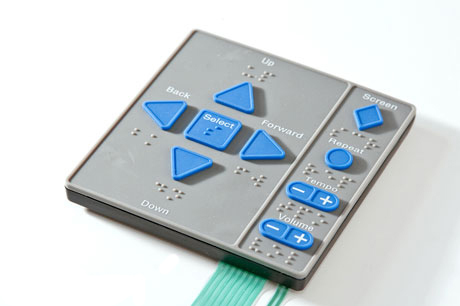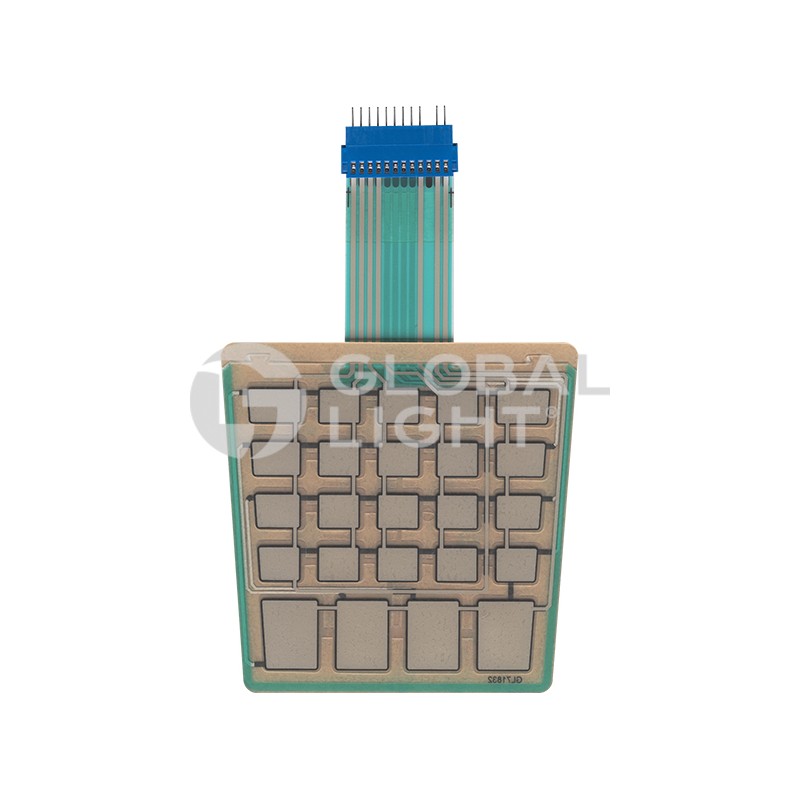How Membrane Switch Technology is Revolutionizing User Interfaces
How Membrane Switch Technology is Revolutionizing User Interfaces
Blog Article
Just How Membrane Layer Switches Improve Customer Experience in Digital Instruments
Membrane buttons play an important role in improving individual experience throughout numerous digital devices, incorporating performance with aesthetic charm. Their structured design not only enhances space yet additionally promotes easy upkeep, while tactile responses offers customers with guarantee throughout operation. Their robust building and construction guarantees long life and dependable efficiency in varied environments. As we discover the diverse advantages of membrane layer switches, it ends up being obvious that their integration extends past simple functionality to influence total satisfaction and involvement. The implications of these functions on details sectors warrant a closer exam.
Advantages of Membrane Switches
Membrane switches deal many benefits that boost both performance and user experience in different applications. Among the essential advantages is their small layout, enabling for a streamlined interface that decreases the general footprint of digital gadgets. This space-saving function is especially important in portable and mobile tools, where size and weight are critical considerations.
Additionally, membrane layer switches are very sturdy, usually including resistance to moisture, dirt, and chemicals. This resilience makes certain long-term integrity, making them ideal for use popular environments such as clinical tools and industrial applications. The lack of relocating components likewise adds to their long life, lessening deterioration gradually.

Moreover, membrane layer buttons are simple to tidy and maintain, as their level surface avoids particles build-up. This characteristic is crucial in setups that require high hygiene requirements, such as food processing and healthcare.

Design Adaptability and Looks
While performance is critical, the design adaptability and aesthetic appeals of membrane switches play a considerable function in improving user experience. Membrane changes supply a vast variety of modification choices, enabling developers to produce user interfaces that straighten with the general appearance and feel of the device. This flexibility is particularly advantageous in sectors such as consumer electronic devices, clinical tools, and industrial devices, where visual charm can affect user interaction and satisfaction.
The capacity to publish customized logo designs, graphics, and colors directly onto the membrane layer surface area enables producers to produce aesthetically striking items that stand out in an open market. In addition, the slim account of membrane changes permits seamless integration right into various device styles, minimizing bulk and adding to an extra structured appearance.
In addition, the unification of responsive feedback alternatives, such as elevated or textured surface areas, improves the sensory experience, making the interface not only aesthetically enticing however additionally a lot more user-friendly. By marrying visual considerations with functional style, membrane changes successfully boost the individual experience, motivating interaction and promoting brand commitment - membrane switch. Therefore, the design flexibility and visual appeals of membrane buttons are pivotal in producing tools that are both visually captivating and functional

Improved Sturdiness and Longevity
A significant benefit of membrane switches over lies in their boosted durability and longevity, making them a suitable option for demanding applications. Created from durable materials such as polyester or polycarbonate, membrane layer switches are resistant to use, wetness, and chemicals, which guarantees their performance in various environments. This toughness dramatically reduces the demand for constant substitutes, see thereby reducing long-lasting maintenance prices and minimizing downtime in crucial operations.
In addition, the closed nature of membrane switches over secures inner circuitry from pollutants like dirt and fluids, even more expanding their operational lifespan. This attribute is especially advantageous in industries such as health care, vehicle, and commercial controls, where tools is commonly exposed to harsh conditions.
Furthermore, membrane switches can withstand substantial cycles of pressing without weakening their functionality, which is important in high-traffic applications. Their resistance to physical anxiety enables them to maintain reliable performance gradually, adding to a consistent user experience.
Tactile Feedback and Individual Communication
The customer experience of membrane switches is considerably boosted by their responsive responses, which plays a crucial duty in user communication. Responsive responses refers to the physical experience users receive when they engage with the controls, giving a calming reaction that confirms input. This sensory responses is crucial in guaranteeing that individuals feel connected to the tool, promoting a much more user-friendly interface.
When customers press a membrane layer switch, the tactile experience signals that their activity has actually been registered, reducing uncertainty and improving self-confidence in operation. This interaction is especially useful in atmospheres where users may be distracted or under time constraints, as it enables for fast and accurate feedbacks without the demand for visual confirmation.
Moreover, the style of membrane buttons can be customized to supply varying degrees of responsive responses, accommodating customer choices and enhancing total satisfaction. Such modification can lead to a more tailored experience, making gadgets easier and much more delightful to utilize.
Applications in Different Industries
Membrane switches locate applications across a varied variety of markets, showcasing their versatility and adaptability. In the medical industry, they are typically used in diagnostic tools and person surveillance systems, where reputable and easy-to-clean user interfaces are essential. Their ability to withstand severe cleaner makes them suitable for atmospheres requiring you can check here high health criteria.
In the automotive industry, membrane layer buttons help with user communication with controls for navigating systems, environment control, and entertainment systems. Their portable design webpage permits assimilation right into restricted rooms, while their sturdiness makes sure long-term efficiency despite constant usage.
Customer electronics likewise profit from membrane layer switches, particularly in gadgets such as microwaves, washing devices, and push-button controls. The tactile feedback and modification options enhance the customer experience, offering user-friendly procedure.
Additionally, membrane layer buttons are made use of in commercial applications, managing machinery and tools. Their robustness and resistance to ecological aspects like dust and wetness add to enhanced integrity.
Conclusion
In conclusion, membrane switches substantially boost user experience in digital devices through their layout flexibility, durability, and tactile responses. Membrane layer switches stand for a vital part in the growth of modern-day electronic gadgets, driving development and involvement.
Membrane switches play a crucial duty in enhancing user experience across different digital devices, combining capability with aesthetic charm.Membrane layer changes deal countless advantages that boost both capability and customer experience in various applications.While functionality is essential, the layout versatility and aesthetic appeals of membrane layer buttons play a considerable role in enhancing customer experience.The individual experience of membrane buttons is dramatically improved by their tactile comments, which plays a crucial duty in customer communication (membrane switch).In verdict, membrane layer changes substantially enhance user experience in digital gadgets with their design adaptability, toughness, and tactile feedback
Report this page